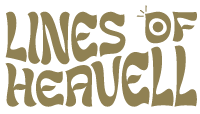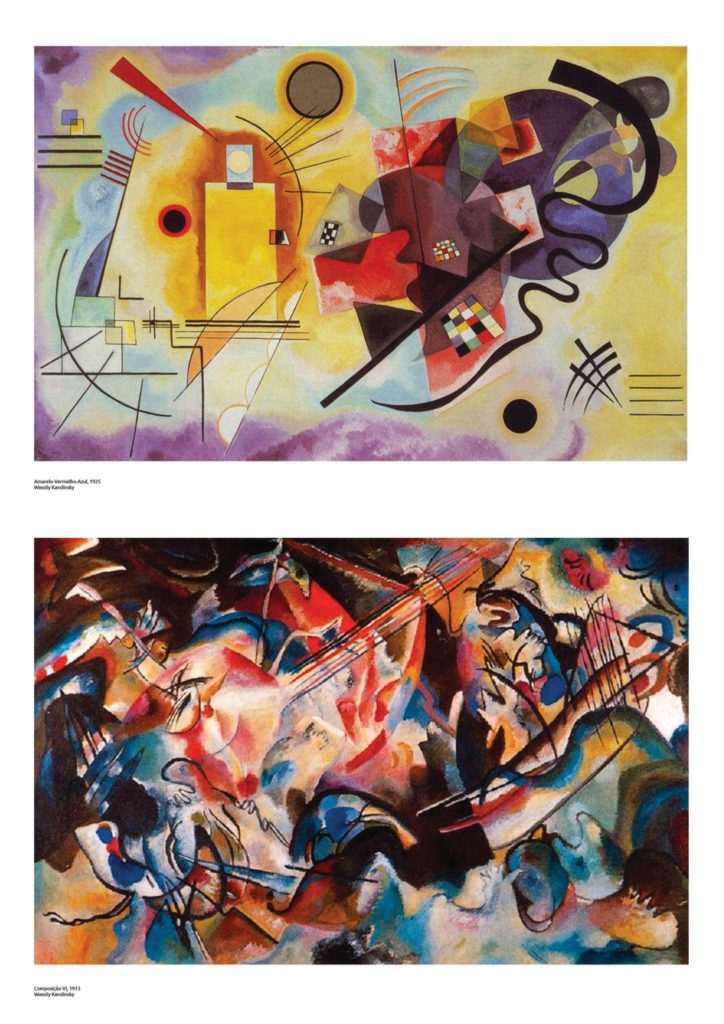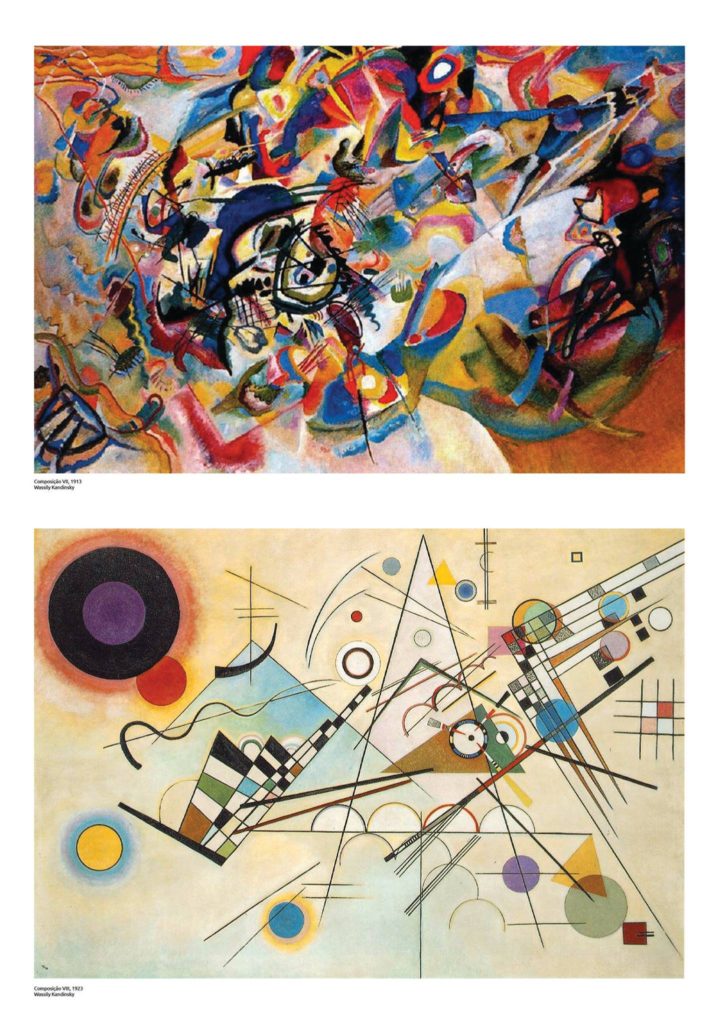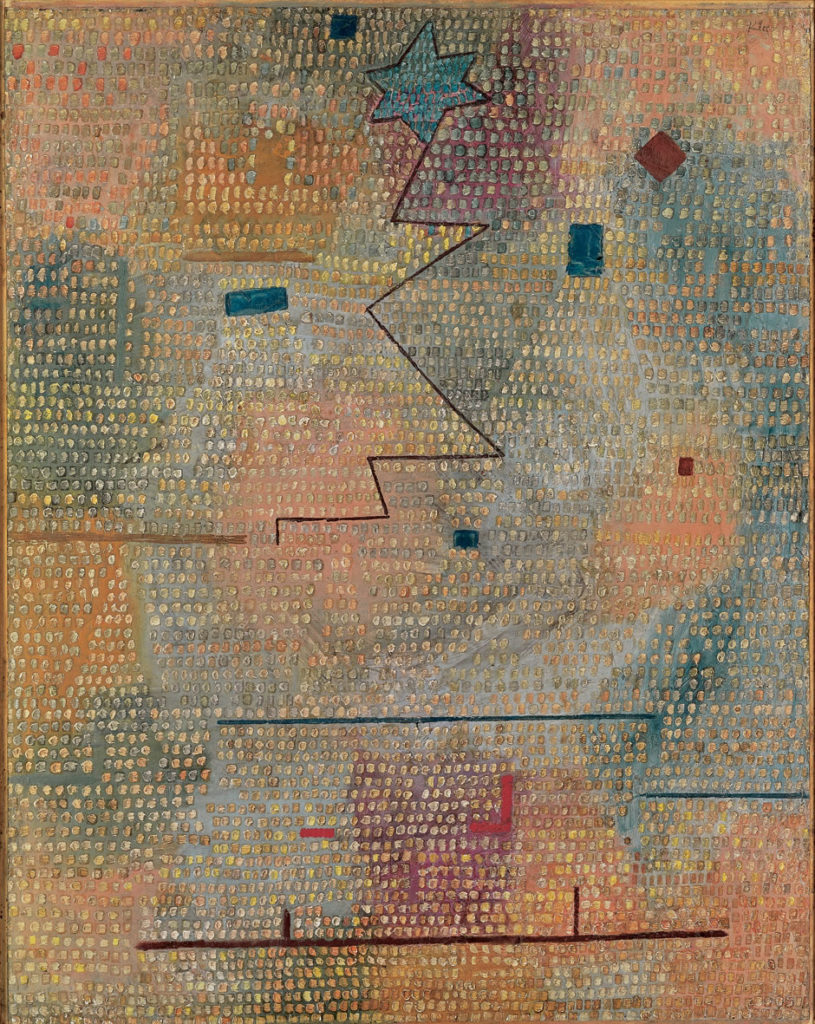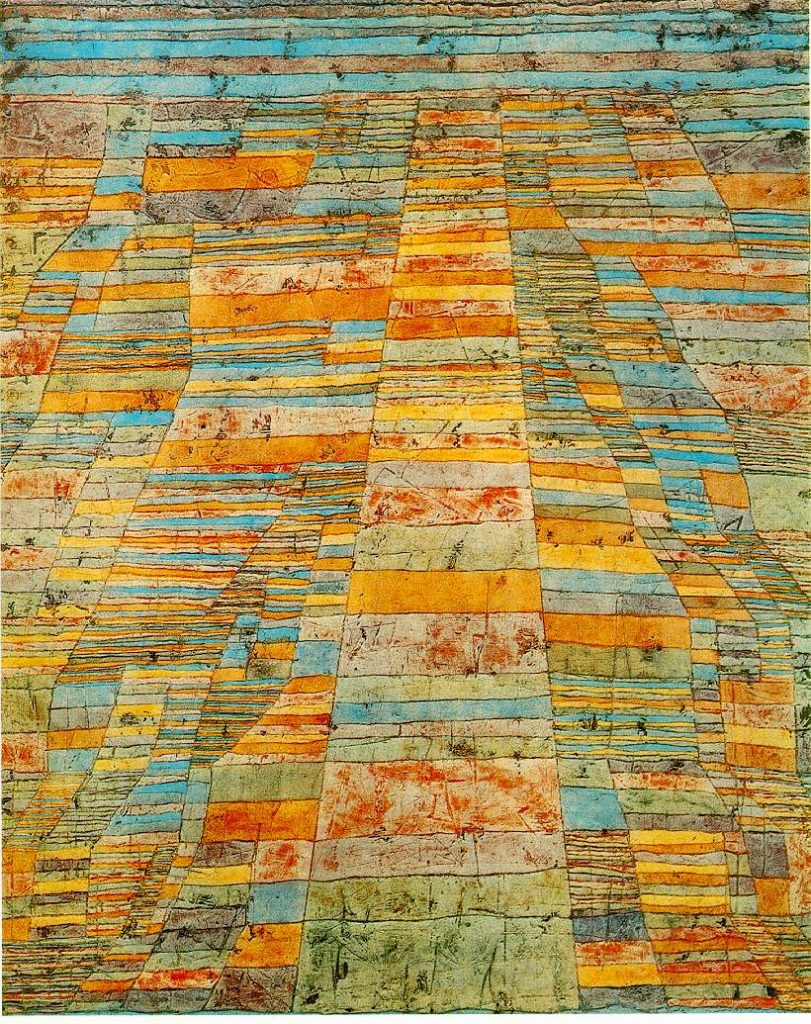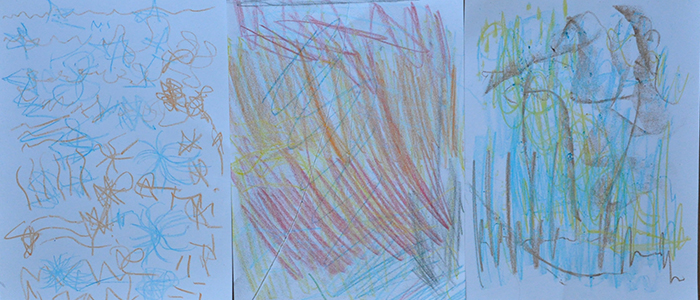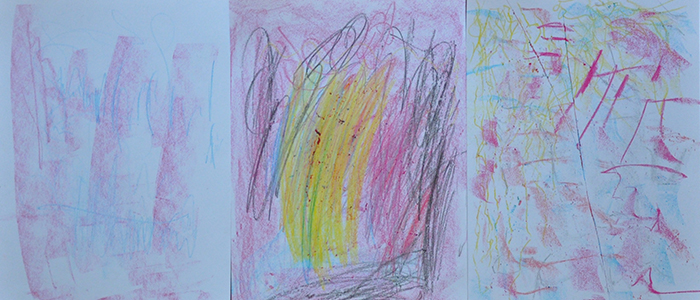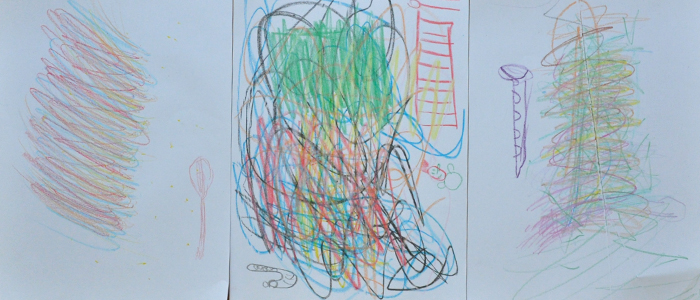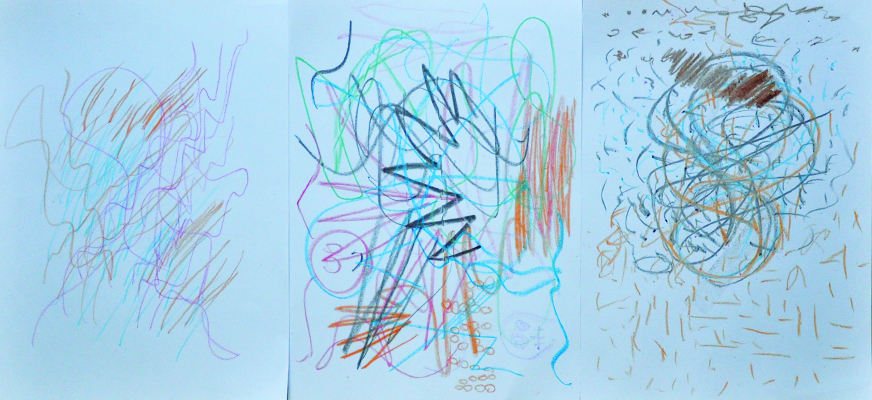This article presents a reflection on the relationship between music and visual art, that is, to show how society transposes music (which is a sound element) to visual (graphic elements). This connection has been present in society for decades and the theme began, at first, to be discussed only by composers in the musical field. One of the first theorists who brought the discussion into the field of visual arts was Wassily Kandinsky (1866-1944). The author had always been fascinated by both languages and discusses the theme of breaking down the barrier between music and painting in several works, but mainly in his book “Concerning The Spiritual In Art” (1912), mentioned further in this article. Another theoretical framework that supports this production is the work developed by the brazilian educator and psychologist Yara Caznok in the book “Música: entre o audível e visível” (2008) in which she developed a research on this subject.
After the theoretical discussion this article will present a practical activity on the theme, held at the Escola Estadual Professora Eunice Virgínia Ramos Navero, located in Campinas, São Paulo, Brazil with 5 students. The idea was to apply Kandinsky’s theory, but mainly Caznok’s theory in which people relate music to images.
THEORETICAL REFLECTION
Nowadays in contemporary art it is common to notice an explicit relationship between artistic languages through the combination of text, sound and space. Examples of this are multimedia art, performance, installation and video clip, which provokes a perceptual phenomenon called “synesthesia”. According to the contemporary theorist Andrew Goodwin, “synesthesia is the intrapersonal process whereby sensory impressions are carried over from one sense to another’” (GOODWIN, 1992 apud CARVALHO, 2006, p. 44). That way when you hear a song, you can relate with figurative or abstract images, such as shapes and colours.
For Goodwin, culture and personal memories are in charge of shooting these images in our heads when hearing something. It would not be an exaggeration to say that, in addition to the images released by the listener’s personal memory, there is a certain type of iconography associated with certain songs, they are the conventions built through culture and its manifestations.
Discussions about the relationship between music and visual art are not current and particular to contemporary art, since they have been going on for many decades. However, it was only from the 17th century that research between colors and sounds was made official. On Yara Caznok book “Música: entre o audível e visível” (2008), one can see these countless correspondences: composers and artists made an analogy between the colours and the timbre of the instruments, the colors with the notes and the colors with musical intervals and the pitch (perception of the frequency of the tones of sounds in the human ear). In the latter, Caznok mentions that when the music reaches a high tone (high frequencies) there is an association with light colors and in low tones (low frequencies) with dark colors.
Caznok (2008) also studied the relationship between music and visual arts in practice with volunteers. In her work, she reports on the experience of how people listen to music and presents fragments of interviews in which we find the presence of shapes, colors, space, lines, contours, figurative or abstract images forming at the moment the music is played. She describes that “listening does not mean just registering the audible, but accessing a listening state that allows one to perceive the presence of the virtual audible and visible, that is, a being-image of music and a being-music of image” (CAZNOK, 2008, p. 229). In one of the descriptions the musician tries to qualify the visual of the song: “a bigger and more filled space too, all the time… But all of this is covered, it is as if it were colored inside, with various colors, you don’t really notice the outline. You are involved in this circle there (musician 1)” (CAZNOK, 2008, p.17).
Regardless of the genre or musical style, “many musical ideas were at the same time visual ideas, pointing to the hypothesis of a sound-visual creation originally merged” (CAZNOK, 2008, p.19), that is, the visual image is present at the moment we hear sounds. She also discusses the relations of western music with aesthetic currents that have visual participation, such as Renaissance “Madrigalism”, contemporary trends through installations and performance, programmatic music and the composers who make synesthetic videos relating the beat of the music with the colors.
To have a better understanding of the relationship between music and color, it is important to get to know the artist considered the pioneer of abstract art and the most famous for debating this theme: Wassily Kandinsky. In his conception, through music, artists move away from the phenomena of nature and give their own life to sounds. His theory is mainly explained in his book, published in 1912, “Concerning The Spiritual In Art”. He explains that the sensation caused when the eyes see a colour is the same that the ear has when hearing a sound. With that, it is clear that the author also did research to confront the meaning and effects of colours in the human being brain, which, in most cases, is done by association and can be relative. To exemplify, he compares some colours with the properties of music. The red can be the same as the sound of a fanfare, almost irritating and reminiscent of fire, pain and irritation while the blue brings the calm that can be the same sensation of a flute playing, among others:
The eye is strongly attracted by light, clear colours, and still more strongly attracted by those colours which are warm as well as clear; vermillion has the charm of flame, which has always attracted human beings. Keen lemon-yellow hurts the eye in time as a prolonged and shrill trumpet-notes the ear, and the gazer turns away to seek relief in blue or green (…) The expression “scented colours” is frequently met with. And finally the sound of colours is so definite that it would be hard to find anyone who would try to express bright yellow in the bass notes, or dark lake in the treble. (KANDINSKY, p. 24-25)
As a way of visual clarification, Angelo Dimitri Campos Guedes (2011) made a comparative table of colors, symbology and analogy with music, through his study of Kandinsky.
Warm colours
| Yellow | ||
| Symbology: earthly, energy explosion and similar to the last forces of summer | ||
| Analogy with music: trumpet treble, played more and more loudly than a shrill fanfare, high notes. |
| Orange | ||
| Symbology: strength, health and safety | ||
| Analogy with music: Angelus bell, contralto voice or viola chanting |
| Red (Warm) | ||
| Symbology: light – energy and triumph | medium – passion | ||
| Analogy with music: light – fanfare with strong trumpet sound | medium – deafening drum roll. |
neutral
| Green | ||
| Symbology: balance, satisfaction and rest | ||
| Analogy with music: medium sounds of a violin, medium frequency. |
Cool colours
| Blue | ||
| Symbology: light – represents infinity, a sense of calm and depth | dark – sadness | ||
| Analogy with music: light – flute | dark – cello or double bass (low notes) |
| Violet | ||
| Symbology: sadness, eternity and depleted energy | ||
| Analogy with music: dull vibrations of the shawm. |
| Red (cool) | ||
| Symbology: dark – vehemence of passion | light – pure joy | ||
| Analogy with music: dark – medium and low tones of the cello | light – high, clear and singing tones of a violin. |
NO TEMPERATURE
| White | ||
| Symbology: restart and birth. | ||
| Analogy with music: musical pause |
| Black | ||
| Symbology: death, definitive silence, end of a cycle | ||
| Analogy with music: end of a song |
Kandinsky understands that music is a pure art, it represents nothing of reality and has a different emotional power. For him, visual art should reach that level. The advantage of transposing sounds to painting is a possibility of eternalizing music, since music itself is momentary and has an end.
Music, for example, had its disposal duration of time; while painting can present to the spectator the whole content of its message at one moment. Music, which is outwardly unfettered by nature, needs no definite form for its expressions. Painting today is almost exclusively concerned with the reproduction of natural forms and phenomena. Her business is now to test her strength and methods, to know herself as music has done for a long time, and then to use her powers to a truly artistic end. (KANDINSKY, p. 20)
Therefore, it is clear that music gives to the individual freedom of imagination and improvisation, as he does not need to think of figurative forms, he can give shapes and colors to sounds.
PRACTICAL APPLICATION
According to the Brazilian National Curriculum Parameters of Art (PCN-Arte) which aims to guide the execution of the activities explored in each school subject, it is important that students are able to experiment and investigate the possibilities of each artistic language. Both in music and visual art, it is necessary, in addition to contextualizing the content, to grant freedom of experimentation and the exploration of materials and techniques to students, so that they develop their own work.
Taking this into consideration and based on the theory prior discussed, a practical activity was proposed to students aged 6 to 13 years old from the Escola Estadual Professora Eunice Virgínia Ramos Navero, located in the Parque Imperador neighborhood, in Campinas, São Paulo, Brazil. This school unit participates in the government program “Escola da Família” (school for family), which means the school opens on weekends to carry out extracurricular activities with their students and family, such as art workshops. For this activity, we explored the Time Watching methodology proposed by Ott (1997).
First, a reflective exercise was proposed in which the students listened to the music and spoke what they felt or saw. The responses were diverse, for example: “reminds me a rave”, “for all the songs I create a dance in my head”, “people dancing a forrózinho” and “I see a flute”. The theme of the workshop was contextualized through the works of artists who used music as inspiration such as Kandinsky, Mondrian and Paul Klee, increasing their imagery repertoire (knowledge of different works of visual arts, producers and artistic movements).
Finally, a practical exercise was proposed for students to get in touch with the properties and expressive art techniques. Crayons of different colors and sulfite sheets were distributed so that they could transcribe the music in visual form. Three songs with different tones, melodies and musical rhythms were played, and the sheets were changed according to the variation of the songs. The students had the autonomy to create whatever they wanted while listening to the different songs.
It was possible to observe that in slower songs without variation of tones, the students drew without pressing the chalk too hard and there were fewer colour variants. In stronger songs, there was a great variation of colors and different pressure of the chalk on the sheet. Some students even drew the instruments they were listening to, thereby linking the image they saw to the sound. Others started to draw figurative forms, but soon abandoned and followed with the abstraction, letting the rhythm of the music influence the design according to the beats.
Final drawings of students
ANALYSIS AND CONCLUSION
In the practical activity, it was noticed that the students corresponded, in a certain way, to the thesis developed by Caznok (2008) and Kandinsky (1912). Even with a big age difference between students, it is clear that everyone has the ability to view images through sound about their experience with the world and their culture. In addition, even though the students have no mastery of the musical language, the drawings make an analogy between the movements and pressure of the chalk with the timbres of the instruments, notes, musical intervals and the musical pitch.
As much as at the beginning of the activity some students started to make figurative drawings, as the music played they went naturally to the abstract, detaching themselves from the real world and thus the sensations perceived by the hearing were transformed into shapes and colors. Caznok (2008) corroborates this issue:
What the artist makes perceptible is not what is already perceived, it is what, quietly and discreetly, inhabits the work and makes it request the same and only opening movement for what is not immediately perceptible. Hence the unity of a single? artwork and the unity of its enjoyment (..) Perhaps it will be discovered that certain works have used the association and maximum audio visibility to provide the listener with the exact opportunity to capture, perceptually, what they can only attend through evocation.
(CAZNOK, 2008, p. 229)
In short, music and visual art have a great connection and when put together arouse different sensations in each individual. Music, when transformed into a form of visual expression, can trigger works with great poetic intensity and personal experience, because it provides freedom of imagination and improvisation, since the individual only feels and transposes it without thinking about figurative images.
Article written by
Thaís Bristotti
Holds a Bachelor of Visual Arts & Design from the Catholic University of Campinas and Diplomas of Web Design (Brazil), Graphic Design and Digital Interactive Media (Australia). Professional background at advertising agencies and freelancer as an art director from the past 9 years. Nowadays is the owner of the website Lines of Heavell where shares her own spiritual and self loving journey with healing and soul art through her lines.
This text was originally published in Portuguese.
“Arte visual e música: relação entre linguagens” (2015)
Download in Portuguese
References
Brasil. Secretaria de Educação Fundamental. Parâmetros curriculares nacionais: arte/Secretaria de Educação Fundamental. Brasília: MEC/SEF, 1997. Disponível em: <http://portal.mec.gov.br/seb/arquivos/pdf/livro06.pdf>. Accessed 20 March 2015.
CARVALHO, Claudiane de Oliveira. Sinestesia, Ritmo e Narratividade: estratégias de interação entre imagem e música em videoclipes do U2. 2006. 133 f. Dissertação (Mestrado em Comunicação e Cultura Contemporâneas) – Universidade Federal da Bahia. Salvador, 2006. Disponível em: <www.midiaemusica.ufba.br/arquivos/t&d/CARVALHO.pdf>. Accessed 12 March 2015.
CAZNOK, Yara. Música: entre o audível e o visível. Ed. 2. São Paulo: UNESP, 2008. 242 p.
GUEDES, Ângelo D. G. Wassily Kandinsky: do Espiritual na Arte e a Proposta de uma Sonoridade Interior. 2011. 90 f. Dissertação (Mestrado em Educação, Arte e História da Cultura) – Universidade Presbiteriana Mackenzie. São Paulo, 2011. Disponível em: <http://tede.mackenzie.br/jspui/bitstream/tede/1814/1/Angelo%20Dimitre%20Gomes%20Guedes.pdf>. Accessed 13 March 2015.
KANDINSKY, Wassily. Concerning the Spiritual in Art. New York: Dover Publications Inc., 1977.
OTT, R. W. Ensinando crítica nos museus. In: BARBOSA, A. M. (Org.). Arte-Educação: leitura no subsolo. São Paulo: Cortez, 1997, p. 113-140.
